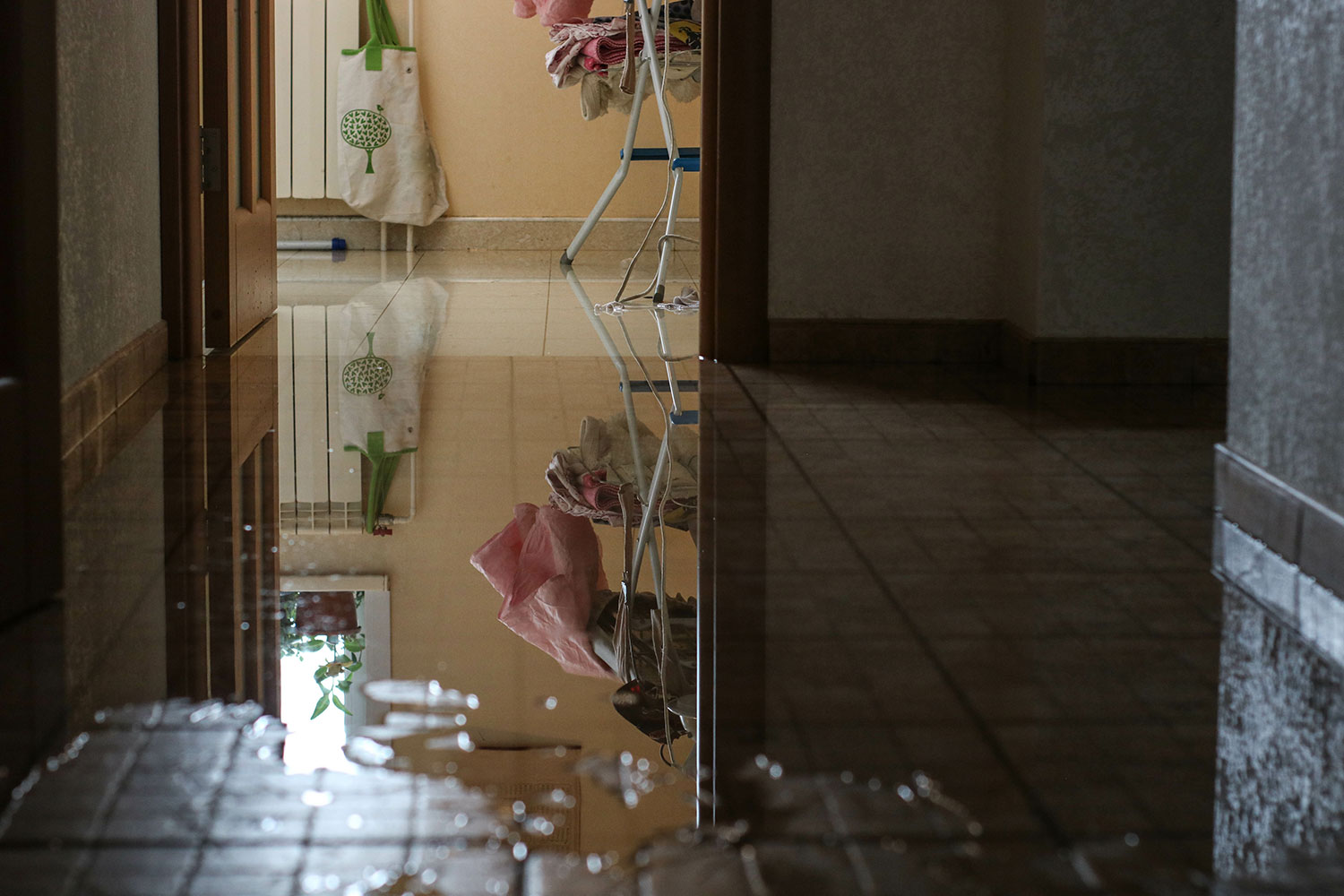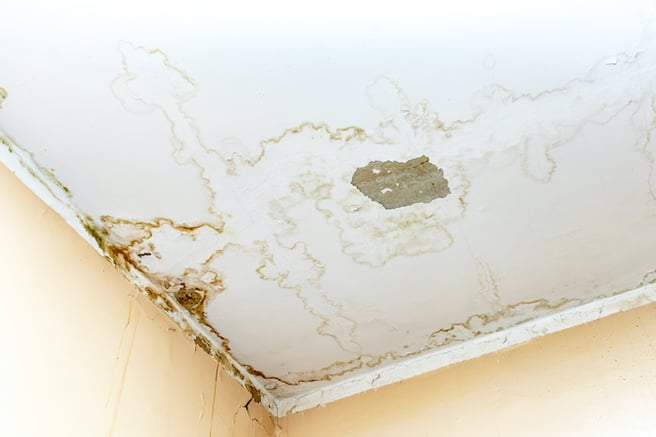Factors Leading to Bathroom Water Deterioration
Factors Leading to Bathroom Water Deterioration
Blog Article
Are you on the lookout for information about How to Repair and Prevent Bathroom Water Damage??

Water damage commonly happens in the bathroom due to the water made use of daily. Often, the damages could be a little mold and mildew from the shower. Other times, it's large damages on your flooring. Whatever it is, it is constantly good to understand the cause as well as stop it prior to it happens.
This guide will undergo several of the usual reasons for water damage in the washroom. We will additionally examine what you can do to prevent these causes from damaging your washroom. Allow's dive in.
5 Usual Reasons For Water Damage in Washrooms
These are the usual factors you would certainly have water damage in your shower rooms and also just how you can spot them:
Burst or Dripping Pipes
There are numerous pipes bring water to different parts of your washroom. Some pipes take water to the bathroom, the sink, the taps, the shower, as well as numerous other locations. They crisscross the little area of the restroom.
From time to time, these pipes might obtain corroded and also ruptured. Various other times, human activity can create them to leak. When this happens, you'll find water in the edges of your washroom or on the wall surface.
To detect this, keep an eye out for gurgling walls, molds, or mold. Call a specialist emergency situation plumbing to fix this when it happens.
Splits in your wall surface ceramic tilesv
Restroom wall floor tiles have actually been specially developed for that purpose. They shield the wall surface from wetness from people taking showers. However, they are not indestructible.
Occasionally, your shower room wall surface floor tiles fracture and permit some moisture to permeate right into the wall. This can potentially ruin the wall if you do not take any type of activity. If you observe a crack on your wall surface ceramic tiles, repair it promptly. Don't wait up until it destroys your wall surface.
Overflowing commodes and sinks
As human beings, often we make mistakes that might cause some water damage in the washroom. For instance, leaving your sink faucet on might create overflowing and also damage to various other parts of the bathroom with wetness.
Also, a malfunctioning toilet might create overflowing. As an example, a damaged toilet handle or various other parts of the tank. When this occurs, it can damage the floor.
As quickly as you notice an overruning sink or commode, call a plumber to help deal with it promptly.
Roof Leaks
Occasionally, the problem of water damage to the restroom could not originate from the restroom. As an example, a roof leak can create damage to the shower room ceiling. You can detect the damages done by looking at the water discolorations on the ceiling.
If you locate water stains on your ceiling, inspect the roofing to see if it's harmed. After that, call a professional to help address the issue.
Excess Wetness
It's great to have that lengthy shower and splash water while you dance around as well as act like you're doing, but in some cases these acts might trigger water damage to your shower room.
Sprinkling water around can create water to head to edges and also create mold and mildews. View how you spread excess wetness around, as well as when you do it, clean it up to avoid damage.
Conclusion
Water damage to your restroom can be frustrating. Nonetheless, you can manage it if you protect against several of the reasons stated in this overview. Call an expert emergency situation plumbing technician if you observe any type of extreme damages.
Common Causes of Water Damage in a Bathroom
Water damage can appear virtually anywhere in your home, but bathrooms and basements are the two most common areas. It’s easier to spot causes and signs of water damage in an unfinished basement, but that doesn’t mean it’s any less severe to have water damage occur in your bathroom.
Spotting Signs of Bathroom Water Damage
The bathroom is probably the most common place where you’ll use water in your home. Because of this, there’s a relatively high risk of sustaining water damage. The longer water damage goes untreated, the worse it can get. Therefore, you need to know what signs to look for and deal with any damage as soon as possible.
There are often items like rugs, bottles, towels, and so on crammed in every corner of the typical bathroom, which can trap moisture and hide budding problems. But what usually causes the most water damage in a bathroom? How can you spot it, especially with so many items in the way? This article addresses several common ways to notice, prevent, or fix bathroom water damage.
A Recurring or Persistent Musty Odor
Wherever there’s water damage, you almost always find small spots of mold, or even a full-blown infestation. When you leave mold to thrive and grow, it creates a stinking, musty odor that’s pretty hard to miss. Don’t leave musty smells unaddressed—try to find the source so that you can have it repaired before more damage occurs.
Damaged Grout or Caulk
When these sealing agents fail, virtually nothing prevents water from seeping past the barrier, causing water damage and mold growth underneath wall and flooring tiles. Damaged showerheads, spigots, grout, or caulking, combined with excessive moisture, create the perfect environment for mold to thrive.
Loose Tiles or Spongy Floors
Moldy and water-damaged walls make it more difficult for tiles to stay in place, which can cause them to become loose. In addition, persistent moisture on a bathroom floor can result in water damage to the subflooring layer, causing it to degrade, lose integrity, and feel spongy.
Stubborn Growth
If there’s visible mold in your bathroom that you’ve removed more than once, the most likely reason it keeps coming back is a deeper infestation in the walls or floors. It’s critical to deal with this problem immediately to prevent further damage and new or worsening health issues.
https://advantaclean.com/blog/common-causes-of-water-damage-in-a-bathroom/

Common Causes of Water Damage in a Bathroom
Water damage can appear virtually anywhere in your home, but bathrooms and basements are the two most common areas. It’s easier to spot causes and signs of water damage in an unfinished basement, but that doesn’t mean it’s any less severe to have water damage occur in your bathroom.
Spotting Signs of Bathroom Water Damage
The bathroom is probably the most common place where you’ll use water in your home. Because of this, there’s a relatively high risk of sustaining water damage. The longer water damage goes untreated, the worse it can get. Therefore, you need to know what signs to look for and deal with any damage as soon as possible.
There are often items like rugs, bottles, towels, and so on crammed in every corner of the typical bathroom, which can trap moisture and hide budding problems. But what usually causes the most water damage in a bathroom? How can you spot it, especially with so many items in the way? This article addresses several common ways to notice, prevent, or fix bathroom water damage.
A Recurring or Persistent Musty Odor
Wherever there’s water damage, you almost always find small spots of mold, or even a full-blown infestation. When you leave mold to thrive and grow, it creates a stinking, musty odor that’s pretty hard to miss. Don’t leave musty smells unaddressed—try to find the source so that you can have it repaired before more damage occurs.
Damaged Grout or Caulk
When these sealing agents fail, virtually nothing prevents water from seeping past the barrier, causing water damage and mold growth underneath wall and flooring tiles. Damaged showerheads, spigots, grout, or caulking, combined with excessive moisture, create the perfect environment for mold to thrive.
Loose Tiles or Spongy Floors
Moldy and water-damaged walls make it more difficult for tiles to stay in place, which can cause them to become loose. In addition, persistent moisture on a bathroom floor can result in water damage to the subflooring layer, causing it to degrade, lose integrity, and feel spongy.
Stubborn Growth
If there’s visible mold in your bathroom that you’ve removed more than once, the most likely reason it keeps coming back is a deeper infestation in the walls or floors. It’s critical to deal with this problem immediately to prevent further damage and new or worsening health issues.
https://advantaclean.com/blog/common-causes-of-water-damage-in-a-bathroom/
I am very drawn to How to Repair and Prevent Bathroom Water Damage? and I hope you appreciated the article. Loved our blog entry? Please share it. Let others locate it. Thanks so much for your time spent reading it.
Expertise at your service. Report this page